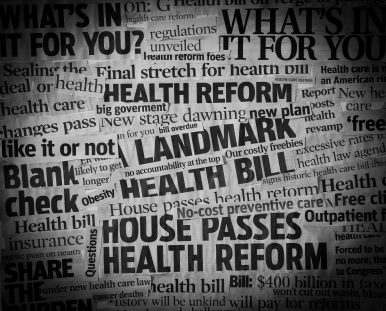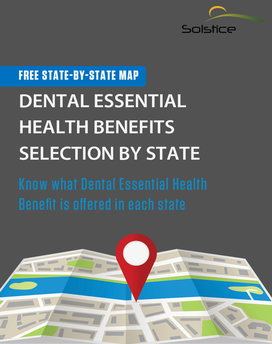By Alissa Gavrilescu on Oct 9, 2013 11:03:00 AM
As a licensed insurance agent and broker, you can create added value for your clients by navigating them through the healthcare reform confusion.
It is important to know what is happening within the lines of business you sell to your clients. The nuances of health care reform vary by medical, dental, and vision plans.
Here we are going to talk about the Affordable Care Act (ACA) and how it affects dental benefits for children.
Health benefits are defined as a provision to pay for doctor visits and medical care. These plans are available through employers, the government, or for purchase by individuals.
The ACA changed the landscape by introducing rules around what the health plans must cover. These rules are called Essential Health Benefits (EHB). This includes basic health services, in addition to coverage for children’s oral and vision health.
Now, not all children receive dental coverage due to the ACA. It depends on a few things. If a parent or guardian works for a large employer, they may already have dental coverage. For families without standalone dental coverage, the ACA provides access through special programs.
The ACA also lets each state decide what is considered suitable dental care for kids. So, it can be different depending on where the consumer lives. Some states only cover basic dental visits, while others provide coverage for braces if considered medically necessary.
When it comes to paying for dental care, there are some rules. There is a deductible or maximum out-of-pocket (MOOP) cost, which is the most a consumer would pay for dental care. Each state can determine a fair amount, with the standard being $1,000 per child.
Now, if consumers purchase a health plan through the federal or state Marketplace, the rules differ. For example, they may set the limit at $700 per child for routine dental care to keep average costs lower. But that means paying more for additional dental procedures.
Some health plans include dental care, with two different maximum amounts. This can get confusing but is designed to ensure the best care possible.
Typically, people buy dental coverage separately from their regular health plan. Only a small percent has dental benefits as part of their medical plan. On the Marketplace consumers can choose to buy standalone dental coverage for their children if they do not get it through their health plan.
The ACA requires all medical plans to provide dental coverage for children, except for on the Marketplace. Those plans are still required to make sure consumers can access dental coverage from another carrier. The government describes ‘reasonable access’ to dental plans. This usually means that consumers can easily find dental plans.
People with separate dental and medical plans should consider if they need both. This will depend on which dentists are in-network and what services the medical plan covers. If pediatric dental services are included on the medical plan, it could mean paying more out of pocket.
If people start dropping their dental coverage, it could mean fewer people getting quality dental care. This would result in a decline in people taking care of their teeth. Poor oral health affects overall health and performance well in school and at work.
While you’re here: Get your free guide to dental benefits and the ACA by clicking the banner below.
Any questions about your current Solstice products? Login to your portal on https://www.solsticemarketplace.com/
Want to start selling Solstice? Give us a call at 877-760-2247 or email us at sales@solsticebenefits.com





comments